This article is part of our body language guide. Click here for more.
Decoding ear body language isn’t as hard as trying to decipher a Picasso painting.
In fact, ears are one of the easiest body parts to learn when it comes to body language—in this guide, I have 7 bite-sized cues for you that pack a punch.
Watch our video below to learn how to read people and decode 7 body language cues:
Here’s what you’ll learn:
- why people touch their ears
- what your taste in music says about your personality
- when to wear earrings (and when not to)

Can You Read Body Language?
How good are your body language skills? Take our free body language quiz to find out!
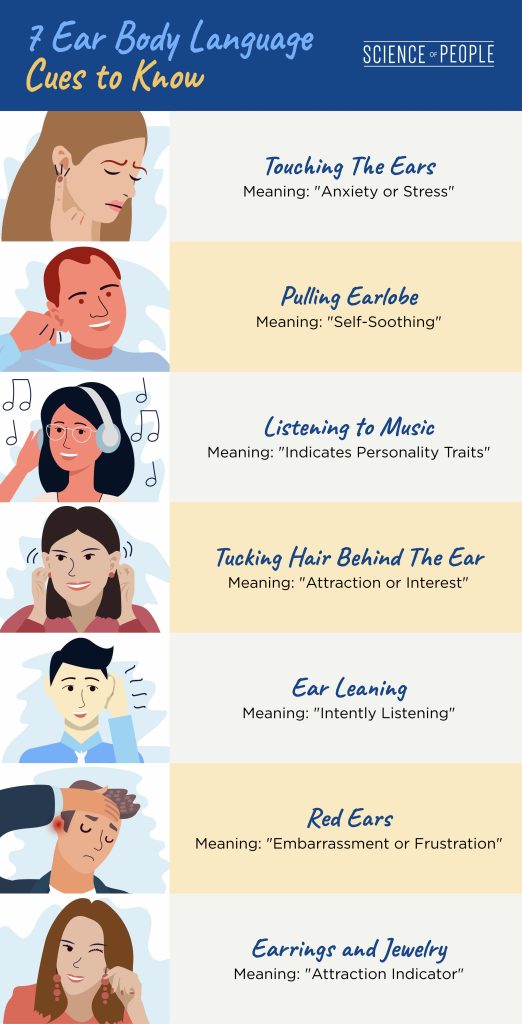
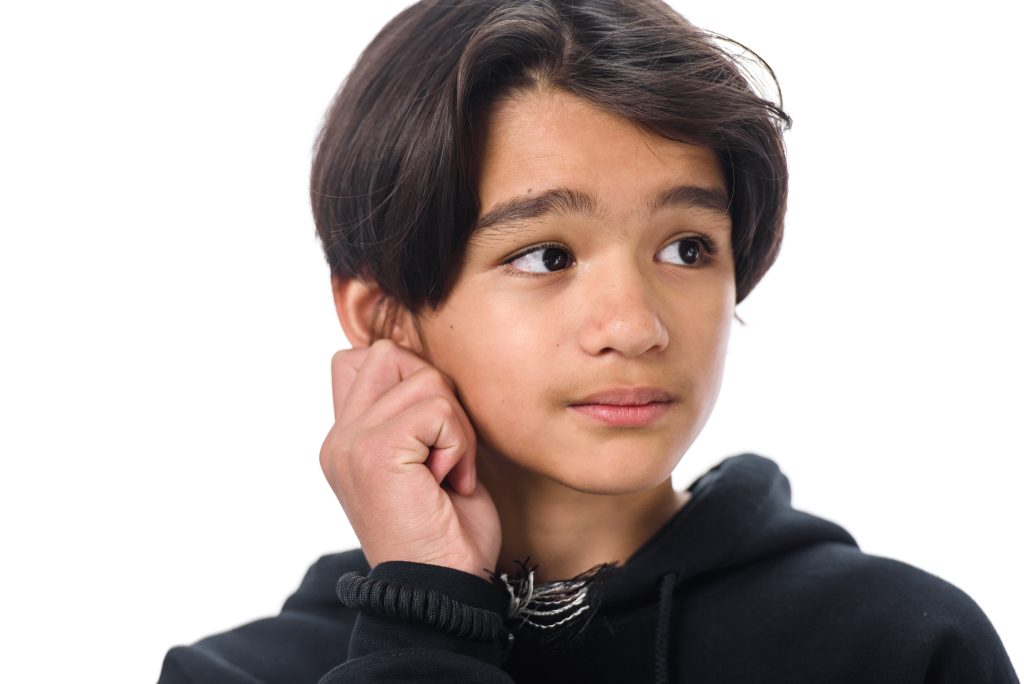
Touching The Ears
What It Means: Touching, rubbing, or scratching the ears is a self-soothing gesture that may happen when a person feels nervous or anxious. Some people touch their ears as a subconscious way to “block out” what they hear, just like the “hear no evil” monkey.
According to research done by Dutch biologist Nikolaas Tinbergen1https://psycnet.apa.org/record/2004-16480-000, people generally scratch behind their ears during situations of conflict, as a way to ease tension and stress. Also, look for this cue during conversation—it can signal that the other person has heard enough and wants their turn to speak2https://www.amazon.com/Definitive-Book-Body-Language-attitudes/dp/1409168506.
However, be careful not to mix it up with a woman playing with or adjusting her earrings. Many women may do this out of habit or even as a fidgeting gesture.

Pulling Earlobe
What It Means: Many women may pull their earlobes, especially out of habit if they had an earring there but removed it. Otherwise, earlobe pulling may be a self-soothing gesture similar to touching.
Comedian Carol Burnett was famous for pulling her earlobe. Carol did this as a reminder to her late grandmother3https://www.biography.com/actors/carol-burnett-ear-tug, as a way of telling her everything is going well:

Tucking Hair Behind The Ear
What It Means: Tucking hair behind the ear can be a sign of interest. Women may do this to appear more attractive and clean. It’s often a sign of preening that indicates she cares about her appearance.
However, it could just mean her hair is in her face and it’s annoying. The next time you’re on a date and notice a woman tucking her hair behind her ear, consider using another flirtation cue to see if she reciprocates.
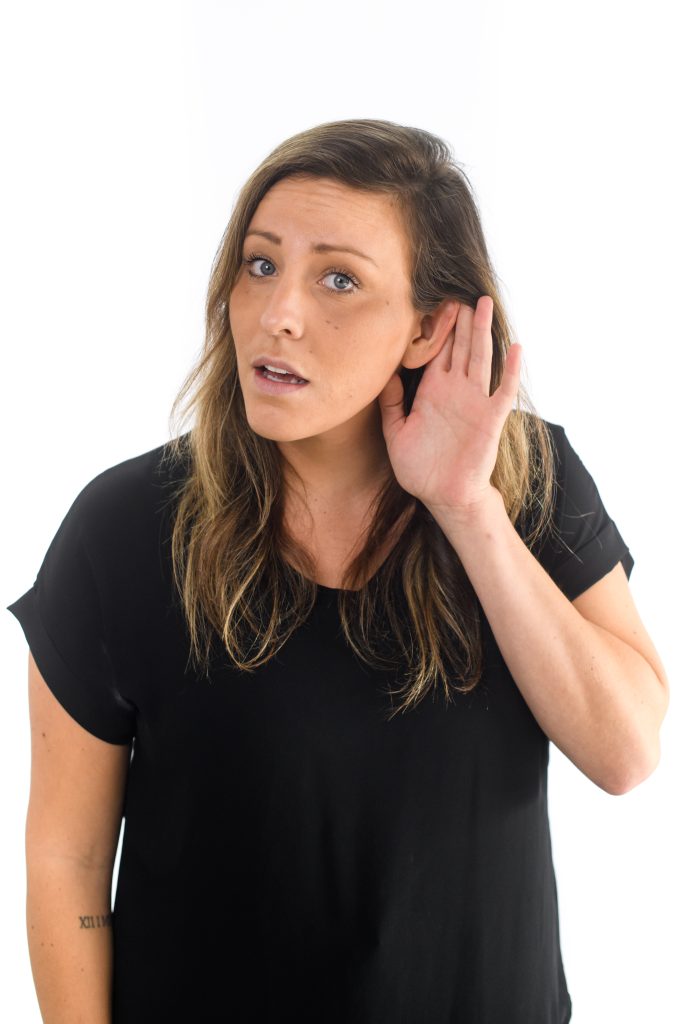
Ear Leaning
What It Means: The definition of ear leaning is when a person turns their ear toward a speaker. Ear leaning signals to someone that they are listening intently, want something repeated, or may even be hard of hearing4https://www.amazon.com/Dictionary-Body-Language-Field-Behavior-ebook/dp/B075JDX981. Sometimes, ear leaning may be followed by cupping the ear to “collect” more sound.
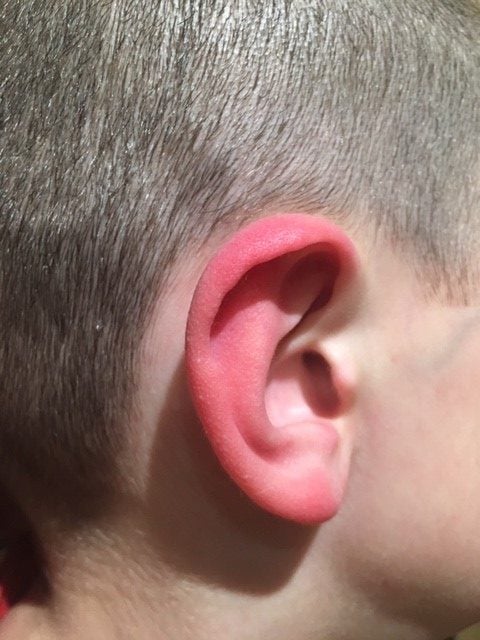
Red Ears
What It Means: Red ears happen when the blood vessels5https://www.healthline.com/health/red-ear in our ears open wider, usually in reaction to an emotional situation. Red ears can be a sign of stress or embarrassment. People who are nervous presenters might show signs of red ears—I was a victim of this in high school!
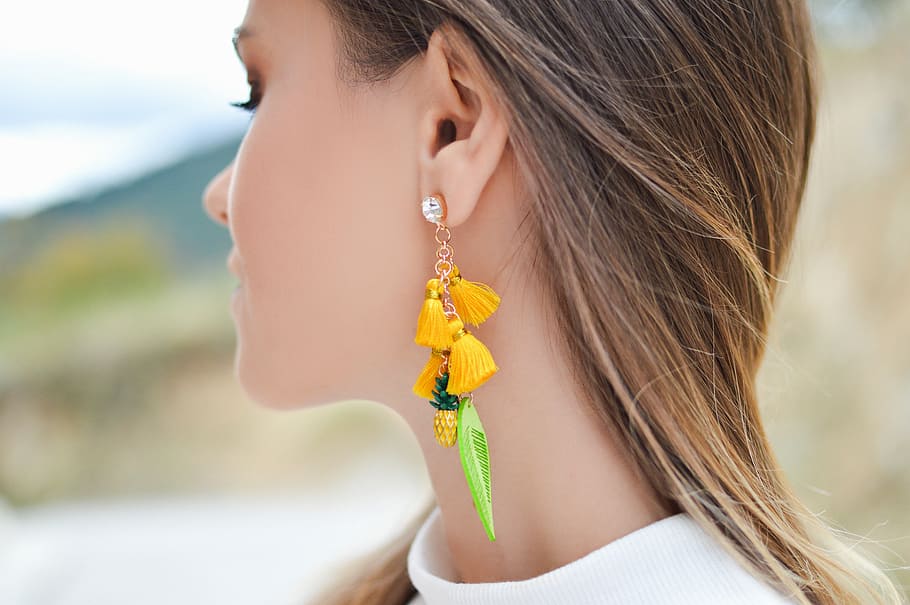
Earrings and Jewelry
Earrings: either you hate ’em or love ’em! Either way, earrings can be a huge attraction signal and can help you… OR damage others’ perception of you. Let’s take a look at the science.
What It Means: Ear ornamentation is very culture specific; it communicates social status, courtship availability, or group identification. It also gives very accurate insight into the background, occupation, social status, heritage, or personality of a person4https://www.amazon.com/Dictionary-Body-Language-Field-Behavior-ebook/dp/B075JDX981.
So when should you wear them?
In a 2011 study6https://www.researchgate.net/publication/263649917_The_Effect_of_Eyeglasses_Earrings_Hair_Length_and_Clothing_Color_on_Impression_Formation_of_Woman_in_Her_20s_-Focused_on_the_Evaluation_of_Female_College_Students– of 362 female college students, women wearing earrings were perceived to have higher individuality, attractiveness, potency, loveliness, and even elegance than the women without earrings. In short, wear earrings to maximize your attractiveness.
But what about in an interview?
In a 2009 study7https://www.tandfonline.com/doi/abs/10.1080/08824090309388828 by researchers at Utah State University, participants (undergraduate students and managers) viewed a photograph of a job candidate who wore either:
- no jewelry
- an earring
- a nose ring
… and then rated the candidate’s credibility, hireability, and attractiveness levels.
Analysis indicated that although the candidate’s attractiveness ratings were not affected by the type of jewelry they wore, credibility decreased when wearing any jewelry, and hireability ratings decreased when a nose ring was added. So it’s a good idea to skip the jewelry during job interviews and business meetings.
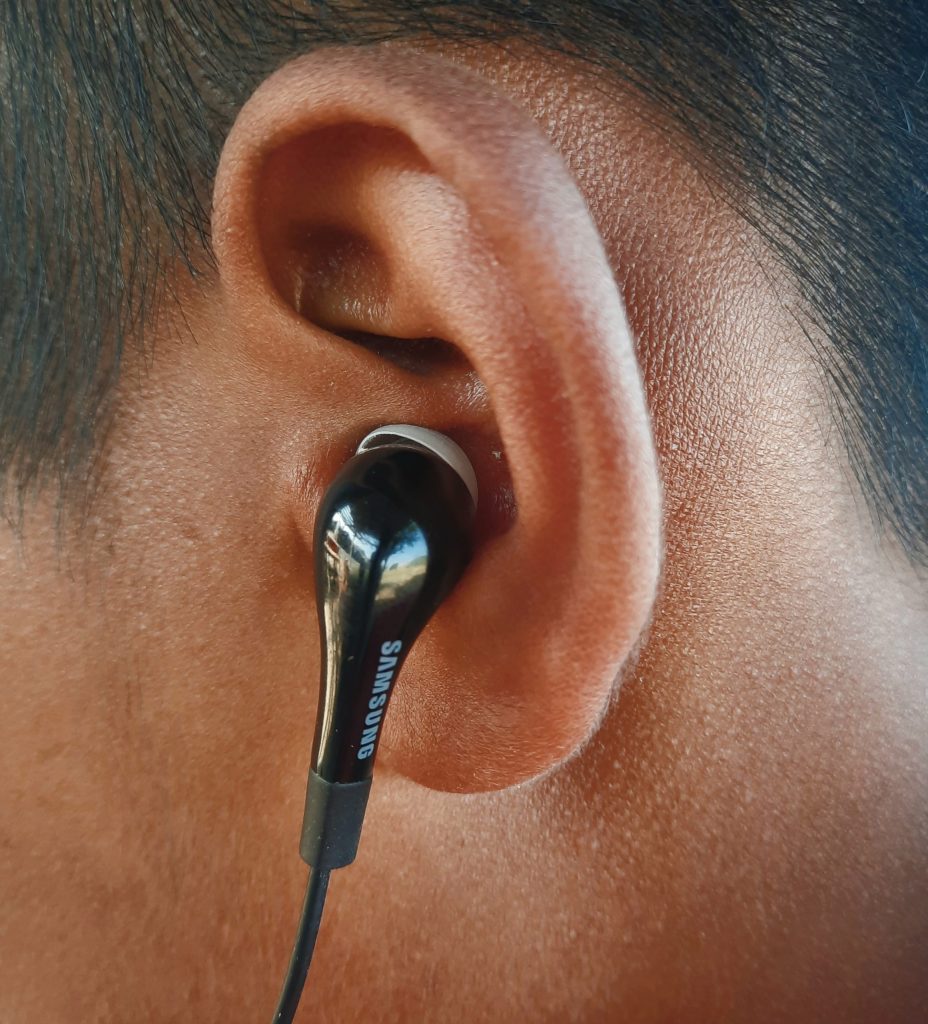
Listening to Music
What It Means: What’s your favorite jam? Besides making you more productive, music is highly personal, and you can infer someone’s personality traits from their tastes:
- People high in openness tend to like sophisticated music like classical, operatic, world and jazz pieces, and dislike mellow and contemporary music like soft rock and rap.
- Extroverts tend to like uncomplicated, relaxing, and acoustic music like folk and country.
- Agreeable people like music across the board—more than the average person does.
- Neurotic people are less likely to like music if there’s no specific genre playing.
Music also has the power to trigger our nostalgic memories. For example, when we listen to music from our childhood, it invokes specific emotions and scenes. Whenever I hear a jazzy “Winter Wonderland,” it brings me back to sipping on hot cocoa near the fireplace with my family.
Music even has the power to evoke our deepest emotions, even with Alzheimer’s patients:
Bonus: I’m Ear For You!
Crack The Code on Facial Expressions
The human face is constantly sending signals, and we use it to understand the person’s intentions when we speak to them.
In Decode, we dive deep into these microexpressions to teach you how to instantly pick up on them and understand the meaning behind what is said to you.
Don’t spend another day living in the dark.
Did you find this guide helpful? For more body language reading, follow along to the complete guide below!
Side Note: As much as possible we tried to use academic research or expert opinion for this master body language guide. Occasionally, when we could not find research we include anecdotes that are helpful. As more research comes out on nonverbal behavior we will be sure to add it!
This article is part of our body language guide. Click here for more.
Article sources
- https://psycnet.apa.org/record/2004-16480-000
- https://www.amazon.com/Definitive-Book-Body-Language-attitudes/dp/1409168506
- https://www.biography.com/actors/carol-burnett-ear-tug
- https://www.amazon.com/Dictionary-Body-Language-Field-Behavior-ebook/dp/B075JDX981
- https://www.healthline.com/health/red-ear
- https://www.researchgate.net/publication/263649917_The_Effect_of_Eyeglasses_Earrings_Hair_Length_and_Clothing_Color_on_Impression_Formation_of_Woman_in_Her_20s_-Focused_on_the_Evaluation_of_Female_College_Students–
- https://www.tandfonline.com/doi/abs/10.1080/08824090309388828
How to Deal with Difficult People at Work
Do you have a difficult boss? Colleague? Client? Learn how to transform your difficult relationship.
I’ll show you my science-based approach to building a strong, productive relationship with even the most difficult people.
